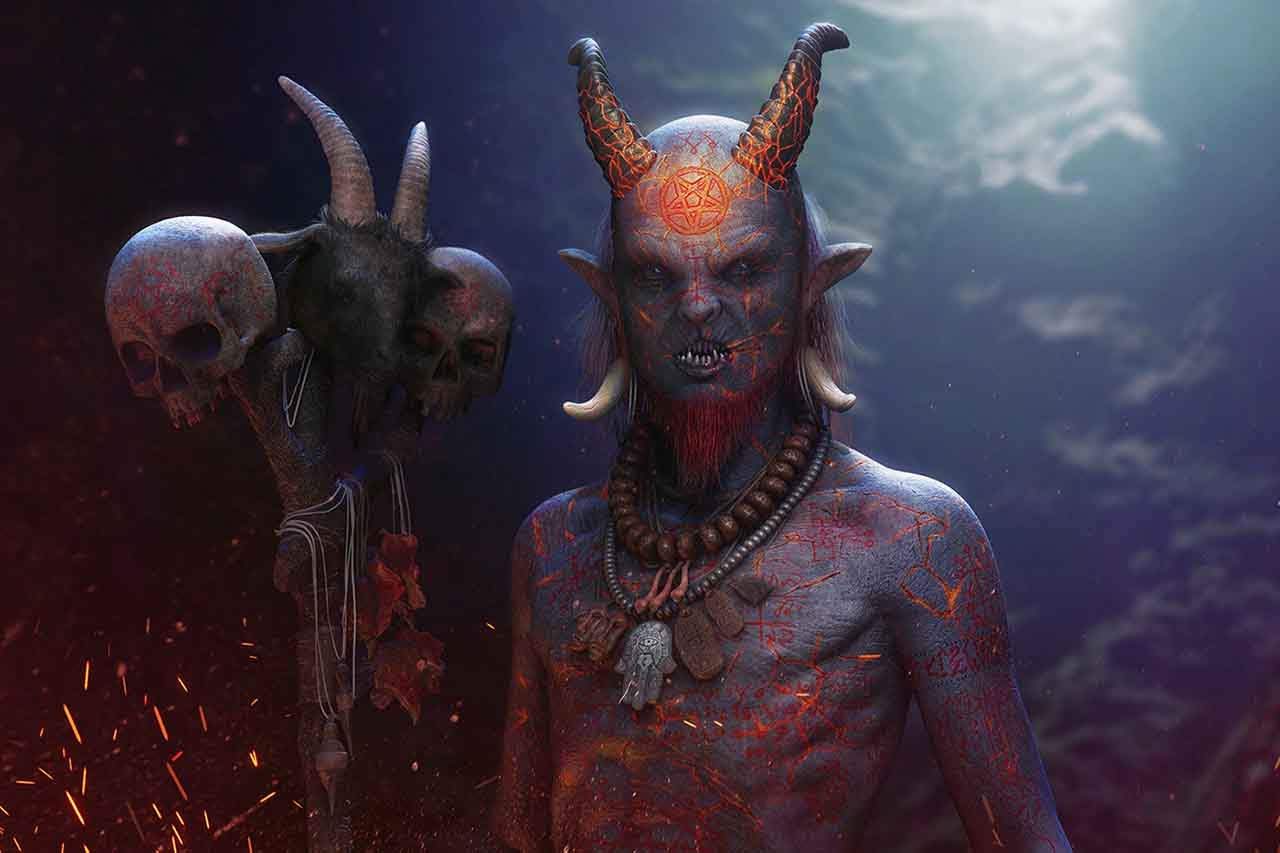Probably the first thing you think when you hear that word, if you’re in the West, would be rubbing a lamp and then some big, blue creature emerges in a puff of smoke and sounds exactly like Robin Williams on coke, but that’s not exactly what jinn are and here are the few things you may not know about jinn.
Most Of Them Are Not Friendly.
The jinn we see in pop culture are not the jinn of folklore nor the jinn of various religious practices, not by any means. Instead of friendly, sing-songy kind of character that, for some reason, is bound to a lamp, the world of jinn is wide and varied and jinn, like human beings, have free will, so some are good, some are evil, some are just unpredictable, and we see regional variation throughout history in the way that jinn were treated. This is present in the etymology of the word because jinn would be the plural, a jinni would be a singular jinn, and then also this same root word is related to the idea of genius. You must be thinking “They sound similar but that’s such an old word. Doesn’t that go back to Greco-Roman times?” The answer is yes, which leads us to another thing:
Belief In Jinn Is Very, Very Old.
It actually predates Islamic culture. Before people were practicing Islam, cultures believed in jinn and they didn’t believe in them as another form of life created by God along with man and angels – no, they believed in jinn as tributary spirits. In some parts of the world, they were venerated, the way you would generate an ancestor. In other parts, they were treated as demigods or nature spirits of some sort, and then in still other parts, they were vilified as demons. And sometimes, they were thought of as the guardians of a place, which is similar to the legends of house, like brownies or fairies in European culture, so we know this is true because there are archaeological evidence.
In Palmyra, northwestern Arabia, there’s an Aramaic inscription at a village called “Beth Fasi’el”, and this pays tribute to what is called the jinni, the good and abiding spirit, the guardian of a place, and if we want to play with the etymology that’s related to the idea of Roman cultures, when people would say they have a genius, it didn’t mean that they were smart at the time, it meant that they were attributing the things that they had done well or ill with a guardian spirit of some sort.
However, jinn are present in the Quran and they are mentioned several times in the text of this book. If you look at the creation story, where man is made by God out of clay, beforehand, jinn are made, also by God, out of a scorching, smokeless fire.
Jinn Are Not All The Same.
They are not all created equally and had a society just like human beings. They would have courts, they would have relationships, marriages, they would even fool around with humans reputedly. And jinn could have different power levels, just as they could have different alignments on the good and bad scale, so the most powerful jinn, the ones that blue character in Aladdin is based on, the ones that could actually do things for you if you command them, were thought oddly enough to be largely evil, also the most powerful of the jinn. And the whole idea, the whole magic lamp idea that Westerners had taken and applied to all jinn comes from that story, comes from a translation or telling of that story, because if you read the actual story of Aladdin, what happens is that a sorcerer sends him into a cave and gives him a ring for protection as he supposed to find this lamp and while he’s in this cave, he rubs his hand, and then poof, a jinn appears and because of the ring, he’s able to command the jinn essentially and we see a similar story when we hear the story about Solomon. He reputedly was able to command jinn with a magical ring.
There’s another creature that comes from this jinn belief, to the West and gets a little mistranslated on the way. There’s a type of jinn called “ghul” and you might recognize that as very similar to a ghoul. So this evil jinn forms the basis of a monster that is so familiar to us from horror films, spooky stories or, if you are a comic book fan, from the old EC classic comics like “Tales from the Crypt” and “Vaults of Horror”, where a ghoul was always just inexplicably showing up to eat things and they weren’t jinn by that point, they just ate people.
They Can Possess People.
Jinn are thought to possess human beings – men, women, and children. This is an analogue of sorts to the Christian belief, especially in the Catholic Church, that people could be possessed by a demon, but in this case, the possessor, the agent of possession, is a jinn, which is evil jinn.
They also have different religions so they could be Muslim, Christian or even atheist – it’s really a roll of the dice. These jinn are driven out in a series of praying rituals called “ruqyah”, which is the recitation of passages of the Quran, and you can watch footage of what people believe to be these exorcisms on YouTube, though I do want to warn you, some viewers may find it disturbing.
Modern Belief In The Jinn Persists.
This is not some ancient tall tale that was forgotten and remains a relic of folklore and mythology. People around the world believe that jinn are real and in certain universities, you can find academics and scholars attempting to apply modern science to prove the existence of jinn, which are not visible to human beings unless jinn want to be seen – they can see us, we can’t see them, and so scholars are trying to prove the existence of this entire other civilizations through various applications of modern science. They’ve touched on the idea of parallel universes, some unknown form of energy, maybe even sentient energy and more.
This is not the only example of these sorts of beliefs existing. In Iceland, there’s still reputedly, a long-standing, widespread belief in a certain type of hidden folk or invisible creatures that may live in rocks, animus spirits of sorts, and this belief is powerful enough and widespread enough that it influences construction. People don’t build roads or buildings in certain places for fear of angering these beings.













